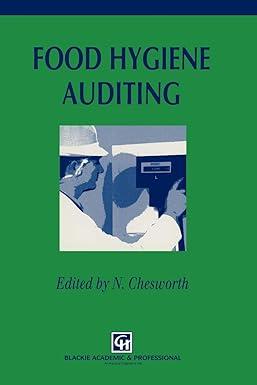You have learned about many activities that occur near the end of the audit as the auditors complete their documentation and draw conclusions about the fair presentation of the financial statements. Listed below are terms associated with activities that occur near the end of the audit. 1. Loss contingency. 2. Type I subsequent event. 3. Typell subsequent event. 4. Legal letter. 5. Analytical procedures. 6. Misstatement. 7. Engagement partner. 8. Engagement quality control reviewer. 9. Those charged with governance. 10. Reasonable period of time. 11. Management representation letter. 12. Critical accounting estimates. 13. Critical accounting policies and practices. For each of the following items, match the relevant term with the situation that is occurring near the end of the audit. Some items may have more than one answer. The terms may be used once, more than once, or not at all. a. An individual in the firm who is not on the engagement team but who evaluates the conclusions reached in formulating the opinion. b. Items required to be communicated to those charged with governance that are unique to the PCAOB standards. c. Documentation that is supplemental evidence related to inquiries made of management during the audit. d. Procedures used to assist the auditor in forming an overall conclusion about whether the financial statements are consistent with the auditor's understanding of the entity. e. Form of communication sent with the client's permission to obtain information about litigation, claims, and assessments. f. At a small private company client, this function falls to the four partners in the company. g. Shortly after year-end, the client receives an insurance settlement that was estimated on the year-end financial statements. h. The difference between management's estimate and the auditor's recommended estimate for a financial statement item. You have learned about many activities that occur near the end of the audit as the auditors complete their documentation and draw conclusions about the fair presentation of the financial statements. Listed below are terms associated with activities that occur near the end of the audit. 1. Loss contingency. 2. Type I subsequent event. 3. Typell subsequent event. 4. Legal letter. 5. Analytical procedures. 6. Misstatement. 7. Engagement partner. 8. Engagement quality control reviewer. 9. Those charged with governance. 10. Reasonable period of time. 11. Management representation letter. 12. Critical accounting estimates. 13. Critical accounting policies and practices. For each of the following items, match the relevant term with the situation that is occurring near the end of the audit. Some items may have more than one answer. The terms may be used once, more than once, or not at all. a. An individual in the firm who is not on the engagement team but who evaluates the conclusions reached in formulating the opinion. b. Items required to be communicated to those charged with governance that are unique to the PCAOB standards. c. Documentation that is supplemental evidence related to inquiries made of management during the audit. d. Procedures used to assist the auditor in forming an overall conclusion about whether the financial statements are consistent with the auditor's understanding of the entity. e. Form of communication sent with the client's permission to obtain information about litigation, claims, and assessments. f. At a small private company client, this function falls to the four partners in the company. g. Shortly after year-end, the client receives an insurance settlement that was estimated on the year-end financial statements. h. The difference between management's estimate and the auditor's recommended estimate for a financial statement item








